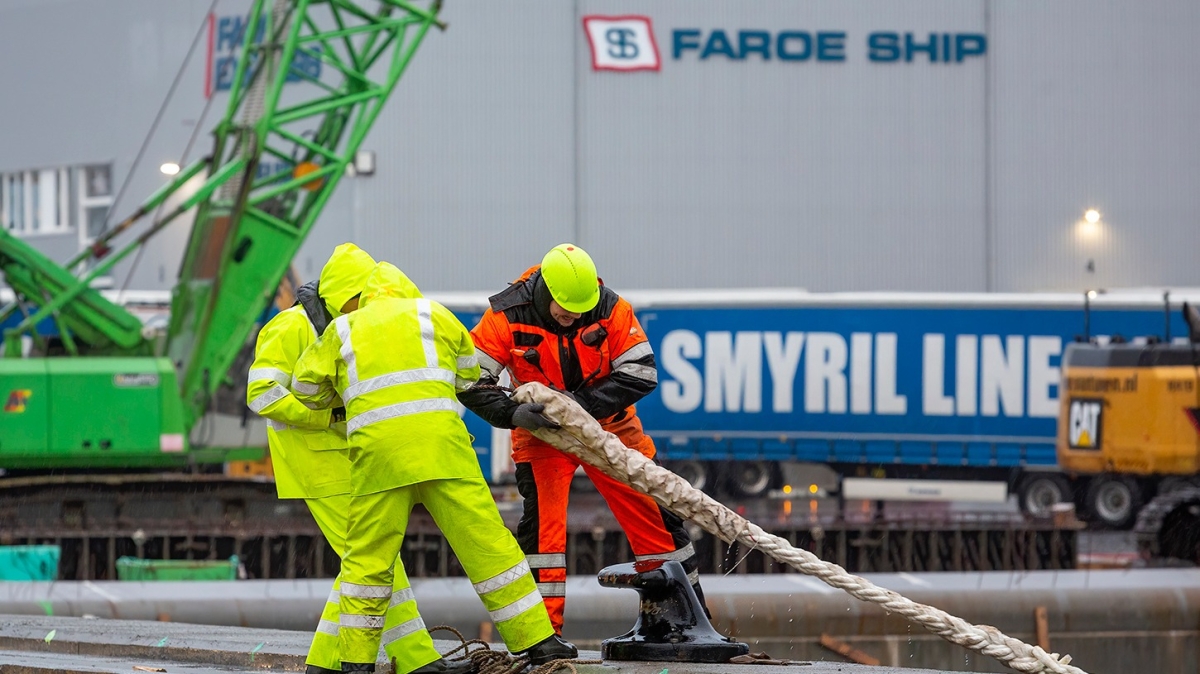Wages (Pay as you earn)
14. Aug 2025
DKK 13.3 billion paid in wages in past 12 months – up 7% year-on-year

Wage expenditures rose by just over DKK 870 million (7%) in the August 2024-July 2025 period compared with the previous 12-month period.
[px-graph-5]
The trend in the graph below reveals steady wage expenditure growth in recent years.
[px-graph-1]
Demersal fisheries wages up by more than half
The table below shows the A-taxable (taxed at source) wages at the first level of the NACE industry classification in the past 12 months compared with the previous 12-month period. The largest increase in money terms was seen in ‘Agriculture, forestry and fishing’, especially within the sub-category ‘Demersal fisheries’, where wages increased by more than DKK 165 million (55%) year-on-year.
Wage expenditures also increased significantly in ‘Human health and social work activities’ and ‘Public administration and defence; compulsory social security’, with each rising by about DKK 130 million (7.5%).
[px-graph-3]
Men account for larger share of wages and wage growth
Women’s wage growth has been relatively steady in recent years, while men's wage growth was more affected when the Covid-19 pandemic hit. In the past 12 months, women accounted for 39% of total wages. This is the same figure as in the previous 12-month period.
[px-graph-2]
Of the total annual wage expenditure increase of DKK 870 million, men accounted for 61%. The year-on-year increase was 7% for both sexes.
Men working for employers under public control had the biggest wage increase in money terms, accounting for half of the total increase (DKK 440 million, up 7.6% year-on-year).
Compared to the previous period, however, the relative growth was slightly larger for women working for employers under public control (DKK 255 million, or 7.9%).
[px-graph-4]
Women’s average wage a third below men’s
The average wage per person was DKK 36,058 in July, up 6.5% year-on-year. The graph below shows the average wage by sex. In July, women’s average wage was DKK 29,398, 30% below the DKK 42,198 average for men. Compared with July 2024, the average wage increased by 8% for men and by 4.7% for women. Note that working hours are not considered when calculating the average salary. The average salary is calculated by dividing the total wage by the number of persons receiving wages.
[px-graph-6]
Highest growth in Sandoy region
The map below shows a percentage breakdown of wages by region in the past 12 months compared with the previous 12-month period. Sandoy residents saw the highest growth at almost 12%, while Norðoyggjar residents had the lowest growth at 4.2%.
More detailed wage statistics are available on the following regional pages: Norðoya region, Eysturoyar region, Norðstreymoyar region, Suðurstreymoyar region, Vága region, Sandoyar region, Suðuroyar region
[px-graph-6]
About the wage statistics
Wages as a statistical concept are part of the broader definition of compensation for employees. Compensation is divided into a) wages and b) employers' contributions to social schemes, including pensions. The terms are based on the description in the national accounting manuals 'System of national accounts' published by the UN and 'European system of accounts' published by Eurostat.
According to this definition, wages include wage components such as basic wages, allowances, overtime pay, holiday pay and employee benefits. Not included are employer social benefits such as pensions, unemployment insurance and maternity benefits.
The wage statistics only include cash wages paid by employers to employees through the PAYE system. The wage statistics thus cover A-taxable wages from employers who are economically active in the Faroe Islands. All wage payments that meet the above requirements are included, regardless of whether the employee resides in the Faroes or abroad.
Revised statistics
Wage statistics were updated and revised in the first half of 2024. These changes have led to a slight increase in total wages, particularly in recent years. The main reason for this increase is the inclusion of employers registered in the Faroese International Shipping Register (FAS), who are now considered part of the Faroese economy. Due to these changes, the latest figures cannot be compared to previous data. Older tables are still accessible in the statbank but will not be updated. These tables are labelled 'Discontinued' in the statbank.